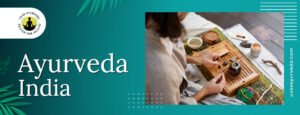Growing up, the Ayurvedic elixirs were not just remedies; they were the magical kadhas that filled our home with warmth and healing. In the tapestry of my childhood, these elixirs were threads woven by the hands of grandmothers and elders who held a repository of knowledge about traditional concoctions. Each sip of ‘Golden Milk’ was not just a remedy for a sore throat; it was a sip of ancestral wisdom, a taste of heritage.
As a child, I vividly remember the distinctive aroma of turmeric wafting through our home when someone fell ill. The preparation of ‘Golden Milk’ was not merely a process; it was a ritual passed down through generations. The simplicity of combining turmeric with warm milk became a source of comfort, and the inclusion of black pepper and honey transformed it into more than just a remedy – it was a familial tradition, a connection to the past.
‘Triphala,’ the trinity of amalaki, bibhitaki, and haritaki, held a special place in our home. As a family, we embraced its cleansing and detoxifying properties. It was not just a herbal concoction; it was a symbol of purity and balance. The process of preparing Triphala was akin to creating a potion, with the careful combination of three fruits symbolizing a harmonious blend of earth’s elements. This elixir was a testament to the holistic approach to health ingrained in our family culture.

In the chilly evenings of my childhood, the aroma of ‘Tulsi Tea’ would permeate our home. The holy basil plant, revered for its adaptogenic qualities, found its way into our hearts through this soothing beverage. Tulsi Tea was more than just a drink; it was a moment of tranquility amid the chaos of daily life. As I sipped on the warm infusion, I felt not only the physical benefits but also the calming effect on my young mind. The experience of Tulsi Tea was a gentle introduction to the power of nature’s remedies.
As a child, I did not fully comprehend the intricacies of Ayurveda in India – Vata, Pitta, and Kapha. Yet, I witnessed how elders carefully recommended specific elixirs based on individual constitutions. It was not a one-size-fits-all approach; it was personalized care rooted in ancient wisdom. The elixirs became a bridge connecting us to our bodies, aligning with the elements within, and fostering a sense of balance.
The preparation of these elixirs was not just a task; it was an art. I watched as my grandmother, with mindfulness and intention, combined various herbs and spices to create concoctions that were not only effective but also palatable. The synergy between ingredients was a dance, a choreography that aimed not just at healing but at nourishing the soul. It was in these moments that I learned that Ayurvedic elixirs were not merely about preventing illness; they were about cultivating a harmonious connection with nature.
The kadhas from my childhood were more than just remedies for the occasional cold or flu. They were a preventive approach to health, a way of strengthening the body’s innate healing abilities. Regular consumption of these elixirs was a ritual that transcended generations, acting as a safeguard against imbalances that could lead to ailments. The elixirs became a shield, a tradition that fortified our well-being.
As I reflect on those childhood days, I realize that Ayurvedic elixirs were not just ancient remedies; they were vessels carrying the wisdom of nature and the resilience of generations. They were, and continue to be, a living legacy passed from one set of hands to another, preserving a cultural heritage that emphasizes the interconnectedness of the body, mind, and spirit.
In the broader tapestry of Ayurveda in India, elixirs are not just potions; they are the stories of families, the whispers of ancestors, and the echoes of a time-tested tradition. As families continue to embrace these age-old remedies, they not only uphold a rich cultural heritage but also tap into the profound wisdom of nature for enduring health and vitality. Ayurvedic elixirs, in essence, are not just remedies; they are the living threads that weave the fabric of holistic well-being across generations.


Leave A Comment